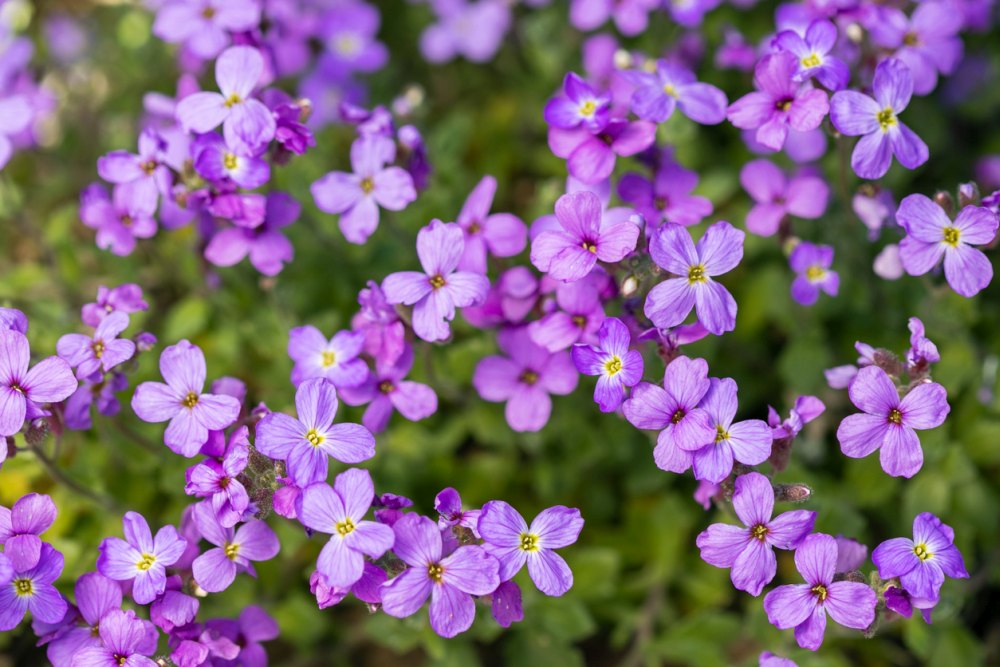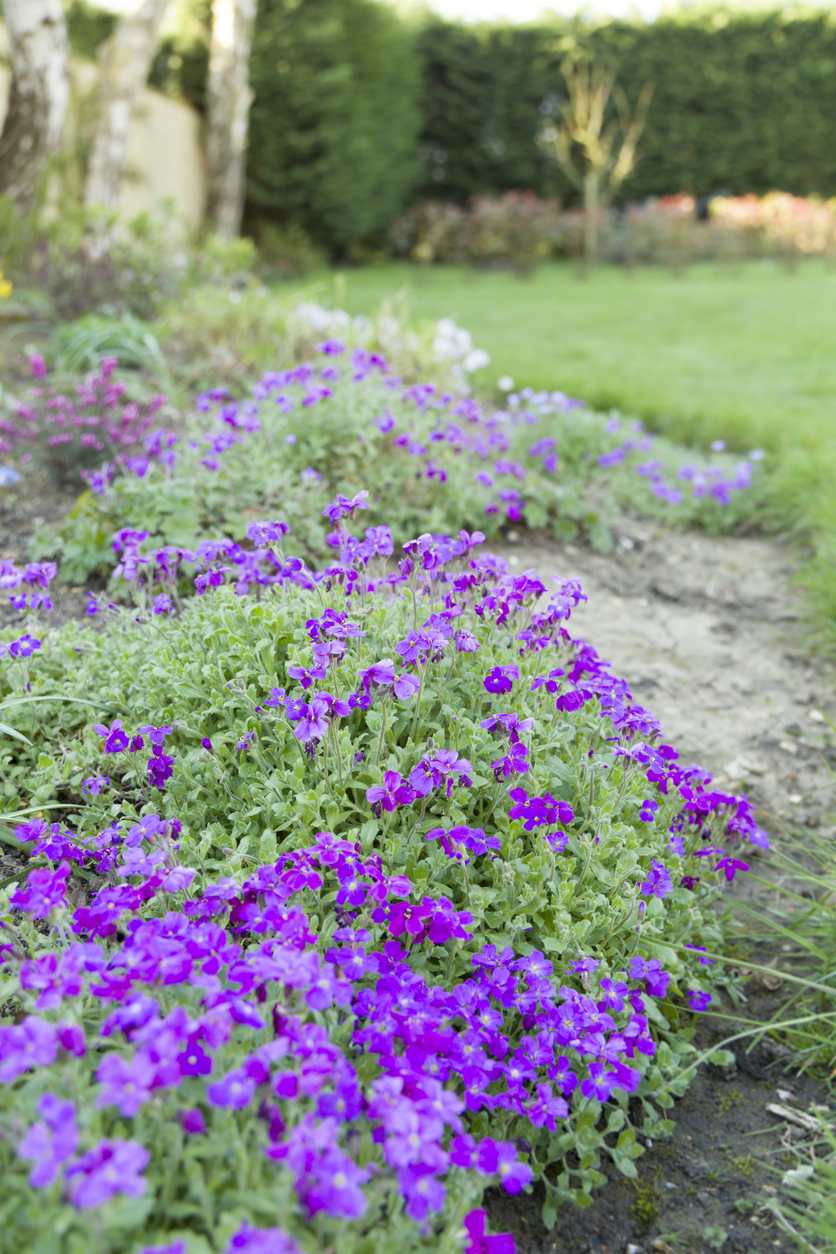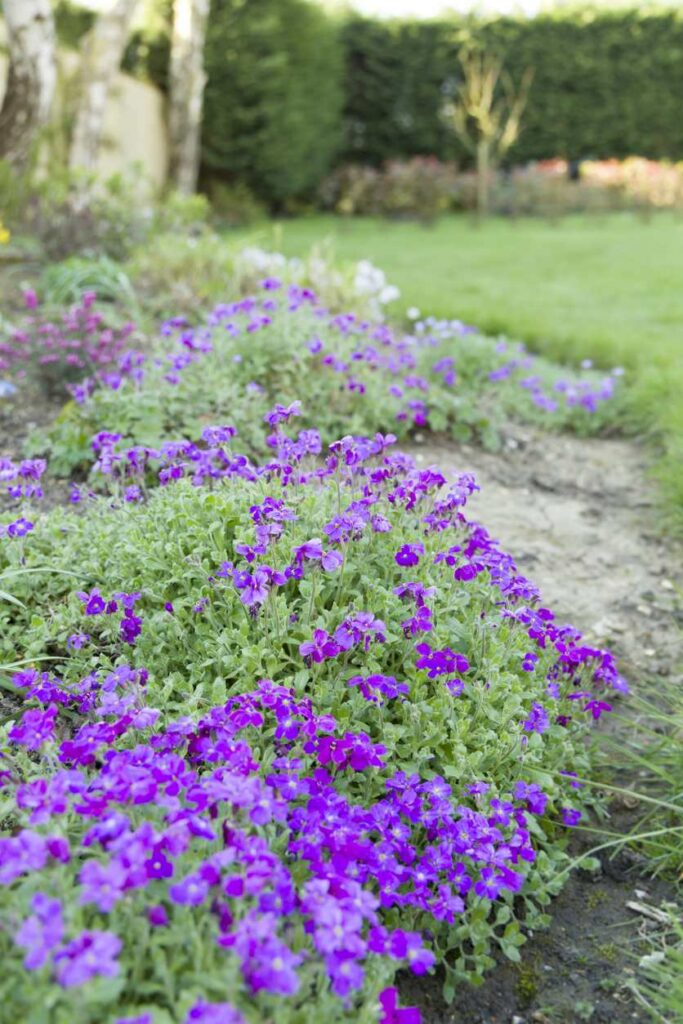Aubrieta Plants – How To Grow And Care For False Rockcress
Often dubbed blankets of color, aubrieta plants are low growing perennials with hues that cover the color spectrum. When rock gardens were all the rage, these false rockcress bloomers became the talk to the town. Their dainty flowers covered every rock and draped every fence and wall. But even if rockeries don’t catch your imagination, the landscaping values of aubrieta plants make them an indispensable plant either as a houseplant or outdoors. Their eye-catching flowers will stop you in your tracks with their delicate petals and deep and rich colors.
Easy to grow and care for, the false rockcress is suitable for every gardener no matter how little gardening skill they have. So how do you make the most out of this showy perennial? This article guides you through the process of planting and caring for aubrieta plants.
All about Aubrieta Plants
Native to Europe and the hills of Central Asia, aubrieta (Aubrieta deltoidea) was first discovered and studied in detail by French botanical painter Claude Aubriet. He dedicated many years of his life to the painting and cultivation of this dainty flower and of course got to name it as well. But it goes by other names such as lilac bush and false rockcress.
As a member of the Brassicaceae family, it is closely related to cabbages and has USDA hardiness zones between 4 and 9. It grows well on the sides of hills and among rocks since it’s not very particular about the type of soil and doesn’t mind a little shade. Aubrieta plants tend to expand horizontally rather than vertically.
On average one plant will spread out to cover about one foot of space and rise up to 8 inches high. This makes it a perfect groundcover in most gardens, fences, and patios. As an evergreen perennial, it will keep its leaves all year round. But if the green leaves get your attention, it’s the blooms that steal the show.
The flowers first appear in the early spring and stay in bloom until mid-May. These small blooms which cover the green carpet come in various shades and colors. The most attractive colors are white, red, pink, violet, and purple. Each plant carries both male and female flowers and they rely on bees to pollinate them.
Aubrieta Plants Varieties
At the peak of their popularity, aubrieta plants were practically in every garden, especially on top of rock gardens. But these days, it offers an excellent and colorful ground cover thanks to its resilience and versatility. With popularity comes the demand for more cultivars and variety. Agriculturalists didn’t disappoint as far the artistic aubrieta is concerned. Here are some of the best varieties to grow.
- Aubrieta Red Cascade: Whether you grow it in a container, as a groundcover, or on a border, this cultivar doesn’t disappoint. It’s pink-red clusters of flowers bloom throughout April and May. It tolerates different types of soil including dry and chalky soil. It thrives in the full sun.
- Aubrieta Blue: A sweeping variety that grows to about 2 feet wide and only a couple of inches high. You can grow it on a wall and let the ravishing blue colors cascade down the edge. It also blooms between April and May and has a hardy nature.
- Aubrieta Double Pink: The “double” here refers to the two rows of petals that bloom in full force from late spring until the end of May. Unlike the regular species that only have four petals, you get a double splash of pink with this cultivar. The center of the flower is yellow and attracts pollinators of all types to your garden. It needs well-drained soil and full sun.
- Aubrieta Blue Beauty: The aptly named cultivar displays its vibrant violet double blooms on a background of fast-growing deep green foliage. More suited for borders and overhanging walls, its landscaping benefits are numerous and ornamental values abundant. It requires alkaline soil and full sun to thrive. This beauty cannot tolerate shade even if partial. It grows well with Helianthemum as a companion plant.
- Doctor Mules Variegated: A popular cultivar grown mostly for its multi-colored foliage rather than its bright blooms. Since the blooming season of aubrietas is short, this cultivar gives you colorful leaves all year round. Some leaves turn green after a while so prune them to encourage the variegated offshoots.
How to Grow Aubrieta
How you plant aubrieta plants depends on what you want to grow them for. Most gardeners grow this evergreen perennial as a ground cover or to trail down walls and borders. In that case, starting them from seeds is the best way to go about it. If you only want a couple of plants in the garden, then you can buy the seedlings from a nursery. Here’s how to start aubrieta plants from seeds in easy steps.
- Make sure you get your seeds from a reliable source. Give the seeds the water test and discard any seeds that float at the surface.
- Select a spot in your garden facing the west or south to make sure it gets full sun most of the day. If you get a warm spring and a hot summer, then an area that gets partial shade will do fine.
- Break the soil with a hoe turning over about 4 inches of the topsoil. This is also a good time to test the soil and make sure the pH is suitable for this particular aubrieta cultivar.
- Rake the soil to make it even and let it rest under the spring sun for a few days.
- When you’re ready to plant the seeds, scatter them manually in a thin layer. Make sure the seeds are spread evenly across the whole area. That way you won’t have some spots with dense clusters of the perennial and barren batches elsewhere.
- Don’t cover the seeds with soil. Sunlight is important for the seeds to germinate.
- Water the soil to get it moist. Keep it that way to help the seeds sprout.
- When the seedlings have a couple of sets of leaves on them, you can thin them keeping about 10 inches between each seedling.
Aubrieta Plants Care
As you can imagine, it’s easy to care for a couple of aubrieta plants growing merrily in your garden than a bunch of them covering your garden. The more plants you have, the more work you need to put in to care for, fertilize, and prune. But these exquisite false rockcress beauties make every ounce of work well worth it.
Soil
Aubrieta plants are some of the few perennials that actually thrive in alkaline soil. In their native alpine habitat, the rocky soil is slightly alkaline. However, you should check the cultivar you grow since some cultivars prefer neutral soil. The pH should be between 6.5 and 7.5. You can add lime to the soil to make it slightly alkaline. But whatever variety you grow, well-drained soil is important. This explains why the plant grows well in rocky soil. Mix your soil with plenty of gravel, small rocks, and vermiculite to improve drainage. Don’t use organic material since that could increase the acidity of the soil.
Light
Another requirement for the mountainous aubrieta plants is full sun. On the sides of the mountains, the evergreen perennials get sunlight at least 10 hours a day. And that’s how much light you should provide for them. Some hardy cultivars might tolerate partial shade, but that’s only if the weather in your area is usually warm during the spring and summer months. Sunlight deprivation can wreak havoc with these beautiful plants. You won’t get as many flowers as you like and the plant becomes leggy and less compact.
Water
The operative word when you water the aubrieta plants is moist. Don’t get the soil wet since these perennials don’t like to get their feet wet. This is why you go through the trouble of providing well-drained soil with plenty of rocks and non-organic material in the soil. Some cultivars can even tolerate dry and chalky soil. But for the most part, you should wait for the top two inches of the soil to dry out before you water it. In the summer, irrigate the plants in the early morning so that the water will not evaporate under the hot sun before it reaches the roots.
Fertilizer
The hardy aubrieta plants get the little nutrition they need from the soil. They are not heavy feeders and don’t require rich soil to grow and bloom. If you still want to give them a good start especially if you have very poor soil, you can use a mild liquid fertilizer or compost tea. Apply it in the early spring before the growing cycle. Avoid feeding the plant with supplements after the flowers have faded. This could make it leggy.
Pruning
Most experts recommend that you cut the aubrieta plants back by about one half after the last flower has fallen. Since the flower seasons only two months long, the plant dedicates its energy and resources to spreading its stems and leaves for the rest of the year. If left to its own devices, the beautiful perennial becomes scraggly and grows out of control. Regular pruning keeps the groundcover in a neat shape and encourages continuous growth. It has a fast growth rate, so you need to keep it in check with your handy shears.
Pests and Diseases
The dense mat of foliage doesn’t attract many pests or bugs to your aubrieta plants. That’s good news to gardeners. The only two problems you might have with the false rockcress are root rot and sparse flowering.
Root rot is often the result of either poor draining soil or overwatering. The symptoms are often yellowing leaves, wilting stems, and drooping flowers. Hold off watering until the soil dries out. When you irrigate the plant, give it enough water to make the soil moist but not wet.
Lack of flowering, or sparse blooms, is often linked to poor light conditions. If your plants don’t get enough sun, they won’t bloom well. Remove any shades that come in their way and allow them to enjoy long hours of sunlight every day.


